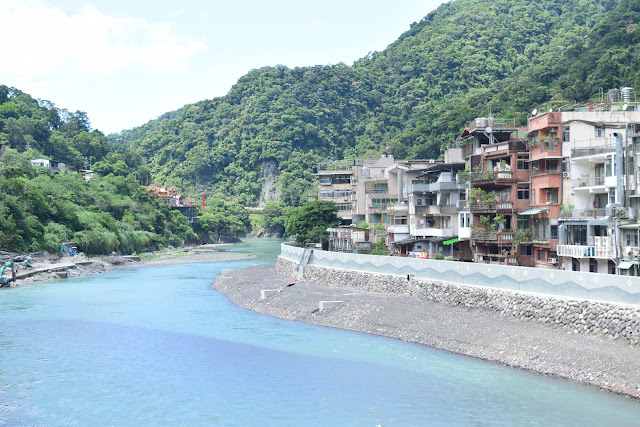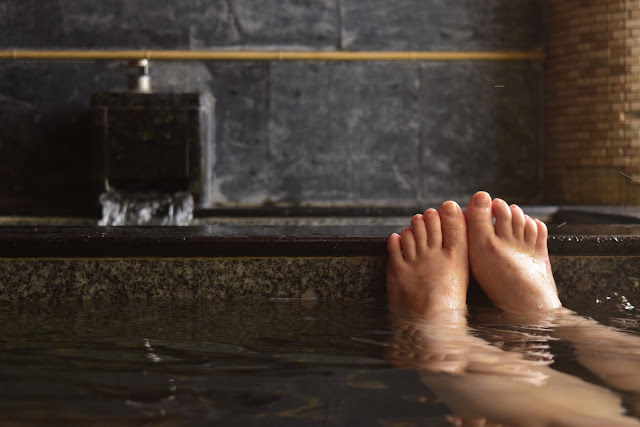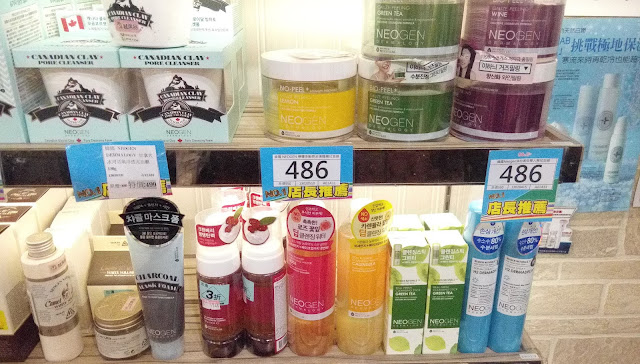
We needed more time. Hong Kong is made up of over 200 islands and lots of things escaped us, like hiking Lantau Peak, exploring Lamma Island, cliff jumping at Sheung Luk, swimming at
Tai O infinity pool and eating butter cookies. We even missed out on the Ladies Market. Obviously, we’ll just have to go back.
However, four days was just enough time to get a taste and fall in love with Hong Kong. Emphasis on taste, because we ate everything: traditional dim sum, Thai, Portuguese and even some legitimate British fish and chips. Pretty sure this is how our money disappeared so fast. Hong Kong’s the most international city I’ve been in and it was delicious.
Day One: Arrival, Wan Chai, Central & Victoria Peak

We hit the ground running and after dropping off bags, immediately caught the MTR to Star Street in
Wan Chai. It was cute, but expensive and we didn’t hang around long before catching the “ding-ding” (a double-decked tram that goes all around the city and is lovingly named after the sound it makes: “ding-ding”) to Central for some food, drinks and shopping. After successfully conquering Central, we caught a cheap taxi up to Victoria Peak for our first proper view of the city. Below are some places of note:
 Luk Yu
Luk Yu – Awesome local Chinese food. The restaurant is very old and famous in Hong Kong. It even has its own
murder story and the food’s amazing. This was a perfect first meal to have in town. Highly recommend.
G.O.D. (Goods of Desire) – Eclectic, expensive souvenir shop, but everything’s high quality and I’d definitely purchase any T-shirts here. They’re soooo soft.
Lan Kwai Fong – Hong Kong’s infamous bar street. It’s kind of creepy and dirty, but there are some treasures to be found. A good rule of thumb is to avoid any establishment that has to hire a door man to talk people inside. Good places don’t need such extravagances. (Side Note: This place would be amazing on Halloween.)
Stormies –Fantastic British pub on Lan Kwai Fong street. Highly recommend the drinks and food.
Day Two: Dragon’s Back, Poho, Temple Street and Ozone

We were supposed to do Lantau Peak and the
Tian Tan Buddha, but having twisted my ankle the night before, adjustments needed to be made. (I’m a special panda.) We switched our outdoor adventure to Dragon’s Back, a short little hike with a view located right next to the city. After getting a taste of the hiking life, we retreated to shower, rest, and get ready for Poho.

Everyone knows about Soho (South Hollywood Street) but Hong Kong takes it a step farther with
Poho (south, South Hollywood Street). We learned about this area the previous night during a friendly conversation at Stormies, where it was recommended as a paradise made for lovers of tea, craft beer, art and cute shops. We were not disappointed and if we lived in Hong Kong, this is where we’d be every weekend. See below for a list of recommended hot spots.
After dinner, we caught a cab to the Star Ferry Terminal in Victoria Harbor and took the short boat ride across the harbor for another nightscape of the city. Do it! I know locals probably won’t mention it and may even talk it down, but don’t listen. (It’s ok to be a tourist.) Once on the Kowloon side, we caught a bus to Temple Street Market for some souvenir shopping. (I have an oil painting now.)

Feeling tired, we skipped the Ladies Market and caught the MTR to Ozone for a night cap before heading home. Ozone is the highest
bar in the world and the perfect spot for drinks above the city. It even has a semi-open balcony where guests can feel the wind coming up off the harbor. Get the cocktails. I love a good beer as much as the next person, but the cocktails here are a step above.
Teakha – My new love. Excellent tea shop with hippie food, like avocado toast and yogurt bowls. Their signature tea is the masala chai, but I really enjoyed the rose and honey.
Craftissimo – Craft Beer! Everything is delicious. They had all kinds of tasty things on tap and we sat around drinking and chatting with locals for a good two hours before dinner.
In-Between – Cute, little shop with local art and old knickknacks.
Frantzen’s Kitchen – We were told to grab dinner here, but it was closed. Looks amazing though. Apparently, you’re supposed to dress up.
Cha Cha Wan – Ended up eating here instead and it was amazing. It’s the good stuff that comes spicy and gets your hands dirty.

We headed to Macau, but honestly one of Hong Kong’s many
island adventures (aka Lamma Island) might have been more fun. Do some research and decide what’s best for you. If you’re trying to add another country to your list, see some old architecture with skeletons, eat delicious Portuguese food, and try gambling for the first time, go for Macau. For seafood and swimming hit up one of Hong Kong’s islands.
Day Four: Departure
I should have gotten up early to hunt down some of Hong Kong’s fabled
butter cookies, but the desire to sleep in was STRONG. We had breakfast, checked in early with Hong Kong’s fancy system and took our time getting to the airport…. where we promptly bought butter cookies 😃
Getting Around
Hong Kong is incredibly easy to navigate. Get an Octopus Card at the airport and go! It works on everything except taxis. That means you can jump on and off subways, ding dings, ferries and buses at your leisure. Getting around is fairly cheap. Octopus Cards come stocked with $100 HKD ($13 USD) and we only had to refill a little on the last day. Taxis weren’t bad either; just be smart and choose wisely.
Where to Stay

We stayed in Tin Hau on Hong Kong Island and loved it. The area is super cute with lots of good food and character. Upon arriving at the station every night, we would indulge in local street food, like nitrogen
ice cream and
egg waffles before bed. It was perfect. Tin Hau station is also conveniently located right on the Island Line only a few stops from Central.

 The historical place was added to UNESCO’s world heritage list in 2005 and its architecture is a stark contrast to the towering skyscrapers and shiny modern feel of Hong Kong’s cityscape. We mostly stuck to the old towns and stuffed our faces with delicious Portuguese food, which was probably the highlight of the trip. We were bad tourists and skipped the casinos, despite telling ourselves that we would visit at least one.
The historical place was added to UNESCO’s world heritage list in 2005 and its architecture is a stark contrast to the towering skyscrapers and shiny modern feel of Hong Kong’s cityscape. We mostly stuck to the old towns and stuffed our faces with delicious Portuguese food, which was probably the highlight of the trip. We were bad tourists and skipped the casinos, despite telling ourselves that we would visit at least one. From the Basilica we caught another taxi to the old streets of Tai-pa, which were very cute and delicious! Get lunch here. (This is important!) The street is lined with several nice traditional Portuguese restaurants, including Fernando’s and Antonio’s. The first option was closed, so we went with Antonio’s and loved it. We sat around for two hours eating and drinking the house wine, making it the high point of the day.
From the Basilica we caught another taxi to the old streets of Tai-pa, which were very cute and delicious! Get lunch here. (This is important!) The street is lined with several nice traditional Portuguese restaurants, including Fernando’s and Antonio’s. The first option was closed, so we went with Antonio’s and loved it. We sat around for two hours eating and drinking the house wine, making it the high point of the day.















































